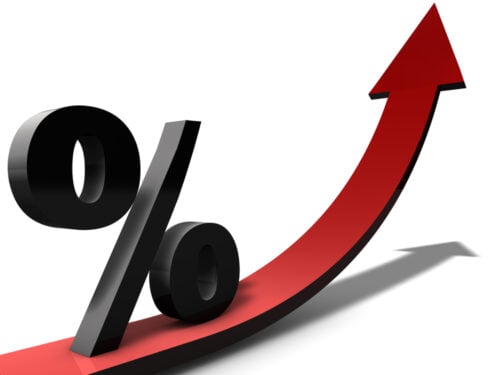In times of market volatility, it’s important to understand what’s happening and why. What comes to mind when you hear the term “stock market correction”? What is a stock market correction, exactly? In this article, we will explain just that!
What is a Stock Market Correction?
A stock market correction is a decline of at least 10% from the high and can happen to a major stock index such as the Standard and Poor’s 500 (S&P 500) or Dow Jones Industrial Average, or to individual stocks.
A stock market correction happens when the value of stocks in a given market falls significantly over a period of time. Corrections are usually short-lived but they can last months. They’re often followed by another rise in share prices.
A correction is considered to be milder than an economic recession, which is typically defined as a decline in the gross domestic product (GDP) for two consecutive quarters (six months).

Bear Market
There are many similarities between a bear market and a stock market correction, but they’re not the same thing. Bear markets apply to the market as a whole, whereas corrections can apply to individual assets or the market in general.
Bear markets occur when a market declines by 20% or more from its recent high. Bear markets are accompanied by a generally negative outlook and fear.
A correction is similar to a bear market but with less severity. A standard definition of a correction is when the S&P 500 falls 10% or more from its recent high point but not more than 20%. For example, if you bought that a $100 stock and it fell to $90 per share in two months, that would be considered a 10% drop from its recent high point of $100 per share.
While corrections last less than two months, bear markets can continue for years.

Bull Market
A bull market is typically characterized by an increase in prices and increased investor confidence, which causes stock prices to rise steadily.
This is in contrast to bear markets, which are characterized by falling investor confidence, causing stock prices to decline steadily over time.
The term “bull market” comes from the way a bull raises its head and horns when charging.
Types of Stock Market Correction
There are two main types of stock market corrections: technical and fundamental.
Technical Correction
A technical correction is caused by a sharp increase or decrease of 10-20% in trading price. Technical corrections often occur when there’s an unexpected event that causes investors to panic and sell stocks quickly, or become enthusiastic and buy rapidly.
Fundamental Correction
A fundamental correction occurs when there are major changes in economic conditions that impact corporate earnings growth or investor sentiment about the future prospects of companies or industries.
Why Do Stock Market Corrections Happen?
There are a number of factors that can contribute to a correction. Below you can find some of the most common.

Overvaluation
This occurs when stocks are trading at prices that are not supported by their underlying fundamentals. Overvalued markets are often ripe for corrections, as they can correct to more realistic levels.
Profit-taking
After a period of gains, some investors will sell their holdings to lock in profits. This selling pressure can lead to further declines in stock prices.
Sentiment
Investor sentiment is a key driver of stock prices. When investor confidence starts to wane, it can lead to declines in stock prices.
Inflation or Deflation
Stock prices change as interest rates and inflation rise or fall — so if you see inflation or deflation, it could mean that there’s less demand for stocks.
Economic Growth
If the economy grows too fast or too slow, it can affect stock prices. Fast growth means more demand for stocks, and slow growth means less demand for stocks.
Interest Rates
When interest rates go up, investors usually have more options for putting their money to work. This means they don’t need to buy stocks so much anymore, or they can use those alternative investments.

Similarly, when interest rates go down, people are more likely to invest their money in stocks because they offer better returns than other investments that pay less interest when interest rates are low.
Things To Do During A Stock Market Correction
When a correction occurs, it’s important to remember that this is normal and happens frequently. There are a few things you can do to protect your investments and make the most of a correction.
Review your portfolio regularly
When the market is experiencing a correction, it’s important to review your portfolio regularly. This will help you determine if any changes need to be made to your investment strategy and consider your emotional and financial capacity.
You may need to sell some of your stocks and reinvest the proceeds into other investments, but there is no guarantee of future results.
Consider buying stocks during a correction
A correction can present a great opportunity to buy stocks at a lower price and adjust your target asset allocation. Many investors sell their stocks when the market starts to decline, which can drive prices down even further.
If you’re considering buying stocks during a correction, be sure to do your research and only invest in companies that you’re confident in.

Stay diversified
Appropriate diversification is an important part of any investment strategy, but it’s especially important during a market correction. By investing in a variety of assets, you’ll be less likely to experience significant downturns in declining markets.
Have a long-term outlook
It’s important to remember that market corrections are a normal part of the market cycle. They don’t last forever, and the market will eventually rebound. If you have a long-term investment horizon, you can weather a market correction without selling your investments.
Talk to a financial advisor
If you’re unsure of how to navigate a correction, it’s a good idea to speak with a financial advisor. They can help you assess your individual situation and make personalized investment advice on how to protect your investments.
Final Thoughts: What is a Stock Market Correction?
While corrections can be scary for investors, it’s important to remember that they are a normal part of the market cycle. By understanding what causes corrections and how they play out, traders can position themselves to take advantage of opportunities during this time period.


 Tags:
Tags:










